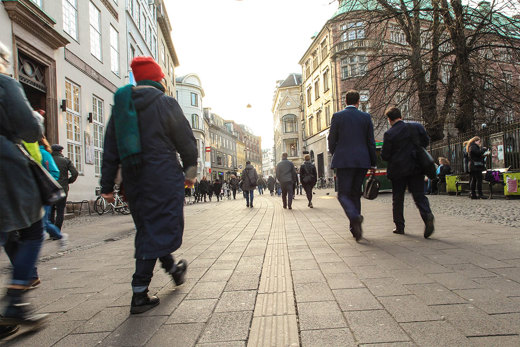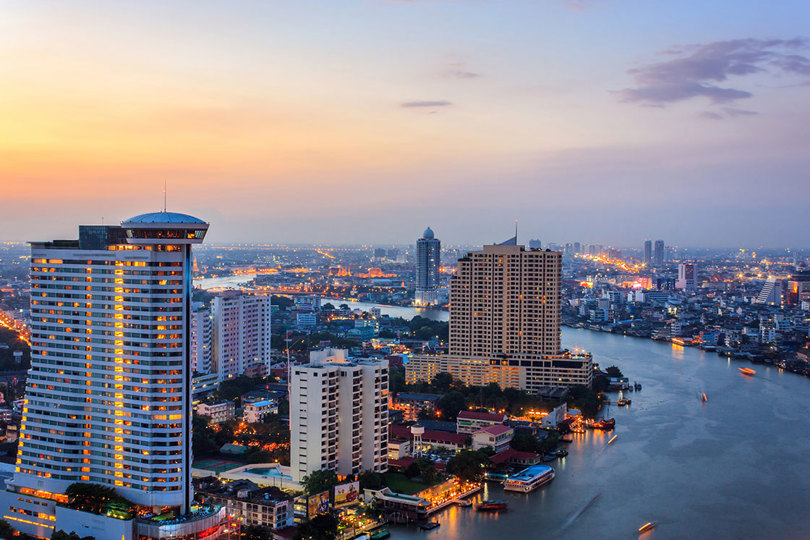
Over the next 33 years, urban areas of the world will need to provide space for another 2.5 billion people. More than 200,000 new urban dwellers per day will take a massive toll on the cities. But, with connected, flexible and future-proof smart buildings and energy systems we can increase urban efficiency and grow our cities sustainability.
Our cities cover only 3% of the world’s surface, but they drive 80% of its economic output, and over half the earth’s population lives in them. At the same time, cities are massive consumers and account for 60-80% of energy consumption and 75% of carbon emissions. Rapid urbanization is exerting extra pressure on climate, health, infrastructure and access to basic services like heating, cooling and water. But done right, it is a major opportunity for achieving sustainable growth, bringing efficiency gains and technological innovation while reducing resource and energy consumption. Cities are where the battle for sustainable development must be won, and a lot of good action is already taking place. The solutions to win are available.
Where it works
The Chinese city of Benxi was suffocating in smog. Today, the capital of Chinese steel industry can breathe again. Danfoss helped the city implement a district heating solution using surplus heat from the local steel production. In 2020, that will reduce the annual coal use in Benxi by 198,000 tons and provide clean air for the population.
In Copenhagen, Scandinavia’s biggest urban development project and living lab for future smart energy solutions is rising. It is a key part in reaching Copenhagen’s goal of being CO2 neutral by 2025. The Nordhavn project focuses on how electricity and heating, energy-efficient buildings and electric transport can be integrated into an intelligent, flexible and optimized energy system that integrates a large share of renewable energy. Danfoss contributes with heating and cooling solutions in the buildings that deliver efficiency and flexibility in the energy system.
In Hamburg’s new green city quarter, HafenCity, sustainable and cost-efficient solutions with Danfoss technologies are keeping consumption of power, heating and cooling to a minimum in buildings and the supply systems. For example, surplus heat from power plants is used to heat all buildings, instead of going to waste. This way, 90% of the primary energy can be used. A concept which could be expanded to other residential areas and cities. Compared to a conventional fossil fuel heat supply, approximately 3.7 million euros in fuel costs and 14,000 tons of CO2 are saved every year.
Buildings offer largest opportunity
The UN Department of Economic and Social Affairs has estimated that by 2050, the world’s population will reach about 9.8 billion – nearly 70% of whom will live in cities.
We need to focus on our urban areas and accelerate the uptake of available technologies when expanding cities or renovating existing buildings and infrastructure. The building sector offers the largest cost-effective opportunity for energy savings. By 2050, savings in heating and cooling will account for almost half of the energy-saving potential in the building sector. At the same time, according to projections, an area equal to roughly 60 percent of the world’s current total building stock will be built or rebuilt in urban areas by 2030. This offers city developers an opportunity to design new buildings that are smart and energy efficient from the beginning. Advanced technologies are available that typically cut up to 40% of energy use in the heating and cooling systems – with a short payback time of typically below years.
Connectivity is key
Our next priority should be connected, flexible and future-proof smart buildings and energy systems for higher efficiency and integration of renewables such as wind and solar power. District energy and cooling can balance the volatility of renewable electricity. In Denmark, wind energy now accounts for more than 40% of the electricity production and often exceeds the country’s total demand. During periods of oversupply, excess electricity from e.g. wind can be used to generate heat with large scale heat pumps and even be stored in the district energy grid. Heat storage is 100 times cheaper than electricity storage.
Let’s be flexible and collaborate
Smart energy systems also use buildings for storage. Supermarkets, which have a lot of cold storage, can serve as giant batteries. When the wind is up and electricity cheap, cooling is increased – and then used as a buffer when the wind dies down. And the potential of using supermarkets to provide flexibility is huge – in Germany, for example, supermarkets alone account for 1-2% of total electricity consumption.
Smart energy systems make it possible to connect electricity, heating, cooling, water and wastewater. To connect the supply side and demand side. Using big data to anticipate and alleviate system peaks. Allowing consumers to become prosumers. These examples of true connectivity and collaboration in a smart energy system will create the synergies needed to increase the urban efficiency and curb the challenges of urbanization and climate change.
With the Paris agreement and Sustainable Development Goals, we have a strong global framework and aspirations in place to push in the right direction. It is time to translate them into concrete actions in countries and cities and accelerate the use of available solutions to implement and win the battle for sustainable development.

Urban Efficiency is key to sustainable growth
The UN Department of Economic and Social Affairs has estimated that by 2050, the world’s population will reach about 9.8 billion – nearly 70% of whom will live in cities.
And the cities are what we need to focus on to reach the goals of the Paris agreement, which sets out a framework to keep global warming below 2 degrees Celsius.
Explore our theme site on urban efficiency and discover why it’s the most effective way to turn the challenges of our cities into opportunities.
